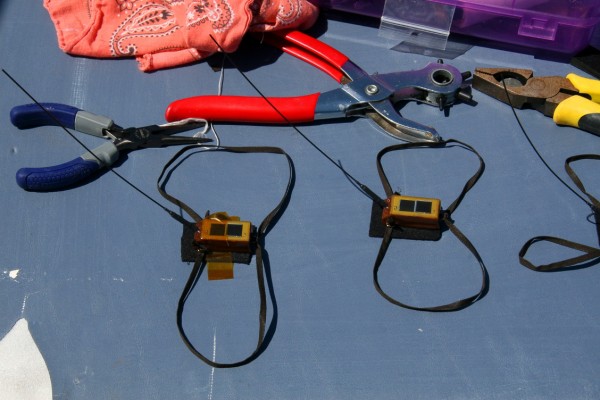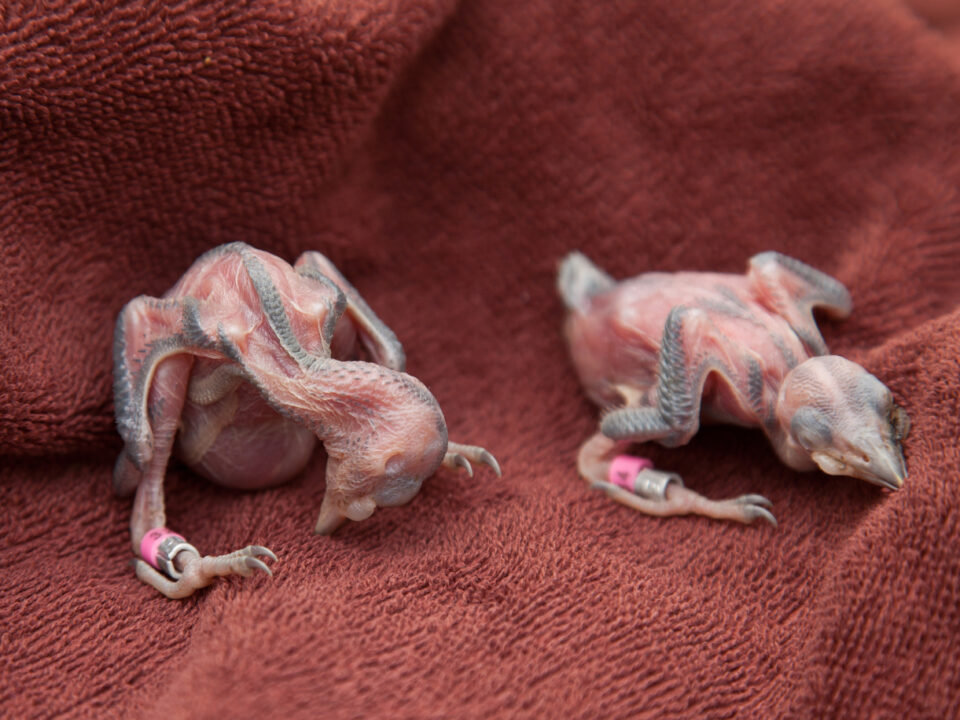Mackenzie whimbrels complete loop migration
Untimely Death of an Appalachian Golden Eagle
July 15, 2013WhimbrelWatch 2013
July 15, 2013
Scientists at the Center for Conservation Biology (CCB) and the Canadian Wildlife Service have tracked 3 whimbrels on a 15,000 mile (24,000 kilometer) loop migration from breeding grounds along the Mackenzie River in western Canada to wintering grounds in Brazil and back again using different routes. The route was broken up into 4 major flights including 1) Mackenzie to the east coast of Canada, 2) Canadian coast to Brazil, 3) Brazil to the Gulf of Mexico, and 4) Gulf of Mexico to Mackenzie. Three of these segments were previously unknown migration routes.
Tracking map – Map of Mackenzie River whimbrel movements July of 2012 through June of 2013. Birds have been tracked using solar-powered satellite transmitters. Map by CCB.
The three birds named Mackenzie, Taglu, and Pingo were originally marked by CCB and Canadian Wildlife Service staff on the breeding grounds along the Mackenzie River Delta in far western Canada (Mackenzie was fitted with a transmitter recovered from Machi, a bird that was shot on Guadeloupe in September of 2011). A forth bird (Akpik) was tracked through three migration legs but its signal was lost in May on the coast of Mexico.

Satellite transmitters and harnesses used to track whimbrel. Photo by Barry Truitt
The tracking data reveal the rigors of migration and identify staging areas important for the conservation of the species. In mid-July the birds took a bold migration route flying 2,800 miles (4,500 kilometers) to the east coast of Canada to stage for 2 weeks before embarking on a marathon 4,300-mile (6,900-kilometer) flight out over the open ocean to the northern coast of Brazil. The birds spent more than 7 months in the extensive tidal system of the Gulf of Maranhao before initiating their spring migration. The birds left their wintering grounds on a nonstop, 4,000-mile (6,400 kilometer) flight to the Gulf of Mexico where they staged for 3 weeks before leaving for their final 3,000-mile (4,800-kilometer) journey to the breeding grounds. Along the way Pingo stopped along the Platte River, a well-known staging area for the extinct Eskimo curlew.
The Mackenzie whimbrel have now linked sites in far-flung, unexpected regions in their orb of conservation. Important in their own right, each of these sites must be considered collectively for conservation efforts to be effective. Mackenzie staged in the heart of the area impacted by the Deep Horizon Oil Spill. The spill began on 20 April, during the time of whimbrel staging in 2010. Such events highlight the fragility of conservation networks and the importance of locations and cultures working together toward common goals. Through these birds we now know that an oil spill in the Gulf of Mexico may impact a breeding population on the Mackenzie River, or a staging area in Nova Scotia, or a wintering area around the mouth of the Amazon. Understanding these linkages is a critical step in protecting these networks and the species that depend on them.

Fletcher Smith with Akpik on breeding ground in the Canadian Arctic. Photo by the Center for Conservation Biology.
The three whimbrels are part of a larger project that has included 20 additional birds that have been tracked to better understand migratory pathways and locations that are critical for this declining species. The study has tracked whimbrels for more than 200,000 miles (322,000 kilometers) since 2008. The broader tracking project is a collaborative effort between The Center for Conservation Biology, The Canadian Wildlife Service, The Nature Conservancy, The U.S. Fish and Wildlife Service, Georgia Department of Natural Resources, the Virginia Coastal Zone Management Program, and Manomet Center for Conservation Sciences.
Updated tracking maps can be found on www.wildlifetracking.org.
Written by
Bryan Watts | bdwatt@wm.edu | (757) 221-2247
July 15, 2013
Related posts
Adult female from Elkins Chimney territory. Both the female and male were lost from this site between 2024 and 2025 nesting seasons and were not replaced. This territory has been occupied since 1995. Five territories were vacated between 2024 and 2025 along the Delmarva Peninsula in VA. Photo by Bryan Watts



